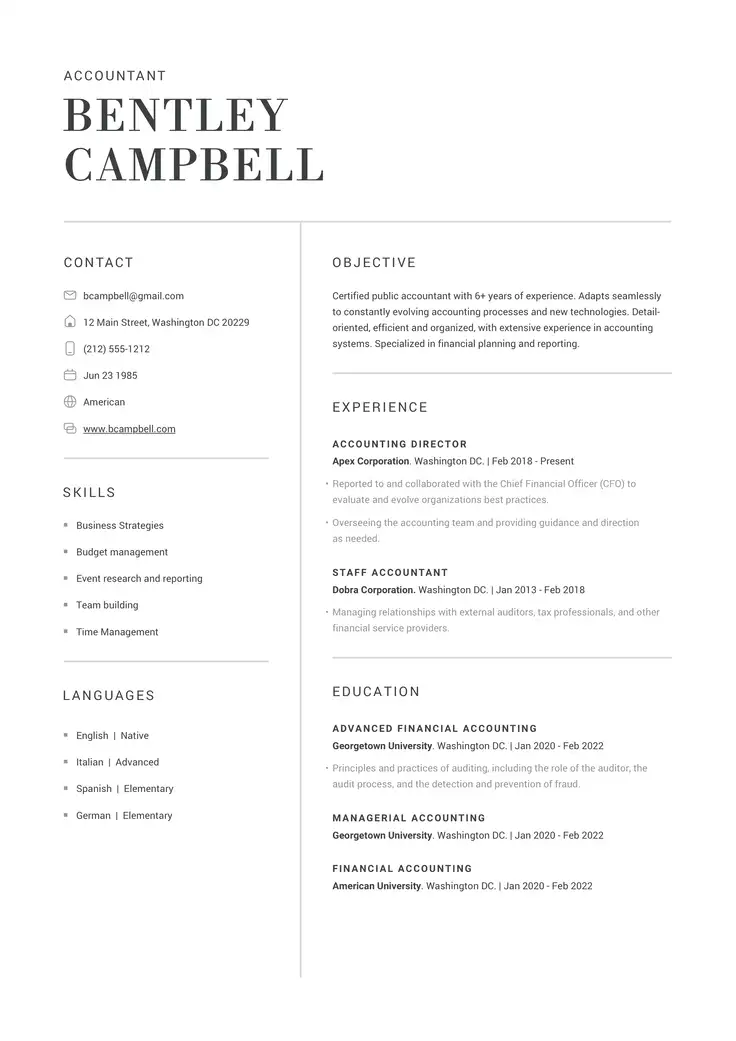In the world of resumes, not all formats are created equal. While fancy templates and eye-catching designs might grab attention, sometimes you need to strip things back to basics—enter the Plain Text Resume.
A well-crafted Plain Text Resume can be the secret weapon that gets your application past the toughest gatekeeper: Applicant Tracking Systems (ATS).
In this guide, you’ll learn how to turn minimalism into your competitive advantage. Ready to make your words do the heavy lifting?
Let’s dive in!
What Is a Plain Text Resume?
A plain text resume, also known as an ASCII resume, is a stripped-down version of your resume without any formatting.
It’s simple, unformatted text that can be easily read by any system or device. Unlike traditional resumes, it contains no bold, italics, bullet points, or special fonts.
It’s a minimalist approach, but it’s effective where it counts!
What is a text brick in a resume?
A text brick in a resume refers to large, unbroken blocks of text that can make your resume difficult to read.
In plain text resumes, where formatting is minimal, these “bricks” can happen when multiple lines of information aren’t spaced out properly or organized into smaller, digestible sections.
Why are text bricks a problem?
- Hard to scan: Recruiters and ATS systems prefer resumes that are easy to scan. Large blocks of text slow this down.
- Lack of clarity: Important information can get lost if it’s buried in a dense paragraph.
Take a look at this text brick resume example for a visual reference:
I have led a team of 10 in crafting digital marketing strategies that boosted online sales. I implemented a customer segmentation strategy that improved email engagement and managed a $500,000 annual marketing budget, optimizing costs while maintaining campaign effectiveness.
To fix this, break your resume into sections with clear headers, use bullet points for lists, and keep sentences concise.
This is what the previous example would look like after applying these changes:
Marketing Manager
ABC Corporation, New York, NY
June 2019 – Present
- Led a team of 10 in developing digital marketing strategies, resulting in increased online sales.
- Implemented a customer segmentation strategy that enhanced email engagement.
- Managed a $500,000 annual marketing budget, optimizing costs while maintaining campaign effectiveness.
When Do You Need a Plain Text Resume?
Plain text resumes may not be the prettiest, but sometimes they’re exactly what the job market demands. Here’s when this minimalist format becomes your best bet:
Email submissions and ATS
When you’re applying for a job via email or submitting your resume through older Applicant Tracking Systems (ATS), plain text is your safest choice.
These systems can struggle with complex formatting like bold text, bullet points, or special fonts, turning your polished resume into a scrambled mess.
A Plain Resume ensures your information gets through, crystal clear, and error-free.
Employer requests
Some employers and job boards explicitly ask for resumes in plain text. Whether it’s part of their application process or a way to simplify their intake, following these instructions shows you can adhere to guidelines—an underrated yet important skill in the hiring process.
Accessibility and compatibility
Different email platforms, operating systems, and devices can all interpret formatting differently.
With a Plain Text Resume, you avoid these compatibility issues, ensuring your resume looks exactly how you intended, no matter where or how it’s viewed.
How To Create a Plain Text Resume
Writing a Plain Text Resume might seem like taking a step back in time, but it’s easier than you think. Here’s a quick guide to get you started:
Step-by-step guide to converting a Word document
If you’ve already got your resume looking sharp in Word (or any word processor), you’re halfway there.
Converting it to plain text is simple:
- Open your document in Microsoft Word (or any word processing software you’re using).
- Click “Save As” and choose the Plain Text (.txt) format from the dropdown menu.
- Double-check the content to ensure all special characters, bullet points, and fancy formatting have translated properly into plain text. Remember, anything bold, italicized, or indented will be lost.
- You may see a pop-up about “File Conversion“—go with the default options here.
Done! Your resume is now in plain text format, ready to navigate even the most finicky ATS.
Alternative method: Copy and paste
Prefer to work directly with plain text? No problem.
This method takes a few extra clicks, but it’s still foolproof:
- Open your resume in your word processor.
- Copy the entire text (CTRL + A to select all, then CTRL + C).
- Open a text editor like Notepad (on Windows) or TextEdit (on Mac).
- Paste the content (CTRL + V) into the text editor.
- Manually fix any spacing or alignment issues using the spacebar, and double-check that your resume still flows correctly.
- Save the file with a professional filename and the .txt extension (e.g., “John_Doe_Resume.txt”).
Whether starting from scratch or tweaking an existing resume, these methods ensure your information is delivered in a clean, accessible format—no formatting surprises when it lands in a recruiter’s inbox!
Structuring Your Plain Text Resume
Building a Plain Text Resume might seem bare-bones, but with the right structure, it’s just as impactful. Here’s a simple layout to ensure your resume is both clear and compelling:
Header and contact information
Start strong by placing your name at the top, followed by your contact details. Keep it all left-aligned and avoid extra formatting.
Professional summary
This is your elevator pitch. Keep it concise—2-3 sentences max. Highlight key skills and achievements. Skip the fluff and get right to what you bring to the table.
Work experience
List your roles in reverse chronological order. Stick to this simple format for your experience: job title, company name, and dates of employment. Follow up with a bullet-point list of achievements. Even in plain text, bullet points speak volumes!
Education and skills
For education, follow a clean format: degree, institution, and year of graduation.
When listing skills, create a bulleted list using dashes or asterisks. Be sure to include both hard skills (like technical abilities) and soft skills (like communication or teamwork).
A well-structured Plain Text Resume keeps things simple but effective. Focus on clarity and impact to ensure your resume gets the attention it deserves—even in its simplest form.
Optimizing Plain Text Resumes for ATS
When submitting a Plain Text Resume, making sure it’s ATS-friendly is crucial. Here’s how to ensure your resume gets noticed and does not get lost in translation.
Avoiding formatting errors
Plain text resumes may be simple, but they’re also prone to formatting errors when read by ATS. Avoid using:
- Fancy symbols or special characters (replace bullets with asterisks or dashes).
- Tabs or extra spacing (use spaces to align text).
- Tables or columns. They can confuse the system.
Stick to basic alignment and punctuation to ensure your resume is read correctly.
Test before submitting
Before sending your Plain Text Resume, test it by pasting the content into the body of an email. Check for any misalignment, broken text, or strange symbols that might have appeared. This gives you a final chance to ensure it’s clean, easy to read, and ready for ATS systems.
Need more help to write your own? Try using a Plain Resume template in combination with ResumeCoach’s AI-powered resume builder. You’ll get step-by-step instructions and tailored advice to help you stand out, even when using the Plain Resume format.
Pros and Cons of Plain Text Resumes
Plain text resumes may seem like a step back in time, but they come with both clear benefits and limitations. Here’s a quick breakdown:
Advantages
- ATS compatibility: Plain text resumes are a dream for Applicant Tracking Systems. Without any fancy formatting, they’re easy for ATS to read and process, ensuring your keywords and experience aren’t overlooked.
- Ease of use: You don’t need special software or design skills to create a Plain Text Resume—just a basic text editor. This makes them quick and simple to edit and update.
- Universal accessibility: No matter what device, platform, or software your resume is viewed on, plain text ensures it’s always legible and free of formatting issues.
Disadvantages
- Lack of visual appeal: Unlike polished Word or PDF resumes, Plain Text Resumes lack visual elements like color, fonts, and formatting, which can make them look less professional.
- No control over formatting: Without options for bold, italics, or even proper bullet points, it’s harder to make important information stand out.
- Limited design flexibility: Forget about creative layouts or visual flair—Plain Text Resumes are as straightforward as they come, which may not impress hiring managers in design-heavy fields.
Final Word
While Plain Resumes excel in functionality, they fall short when it comes to aesthetics. It’s all about knowing when to use the right tool for the job.
A Plain Text Resume is an essential tool in your job search arsenal, especially for applications that require ATS compatibility or email submissions. While it may not have the visual flair of a designed resume, its simplicity ensures your content gets through without formatting errors.
Remember, it’s not always about looking flashy—it’s about delivering the right information in the right format. Ready to give your Plain Text Resume a refresh? Start today!
Related Posts


